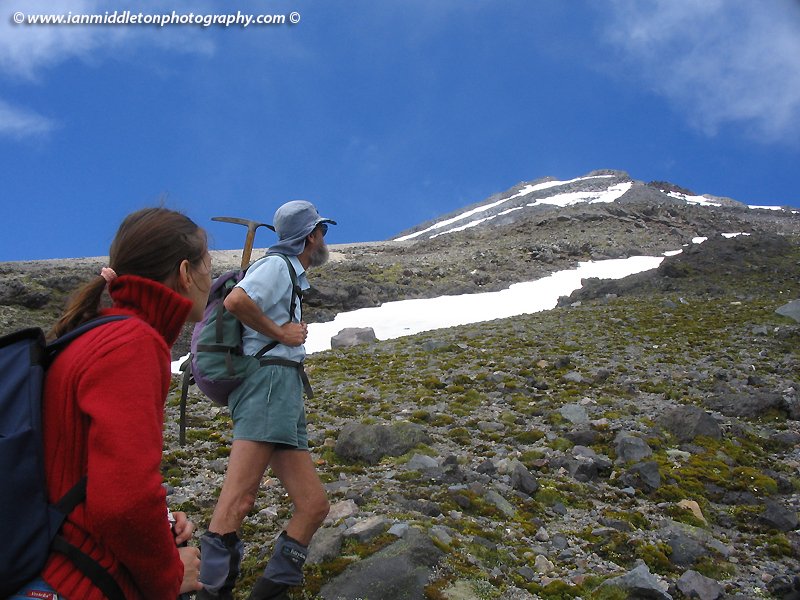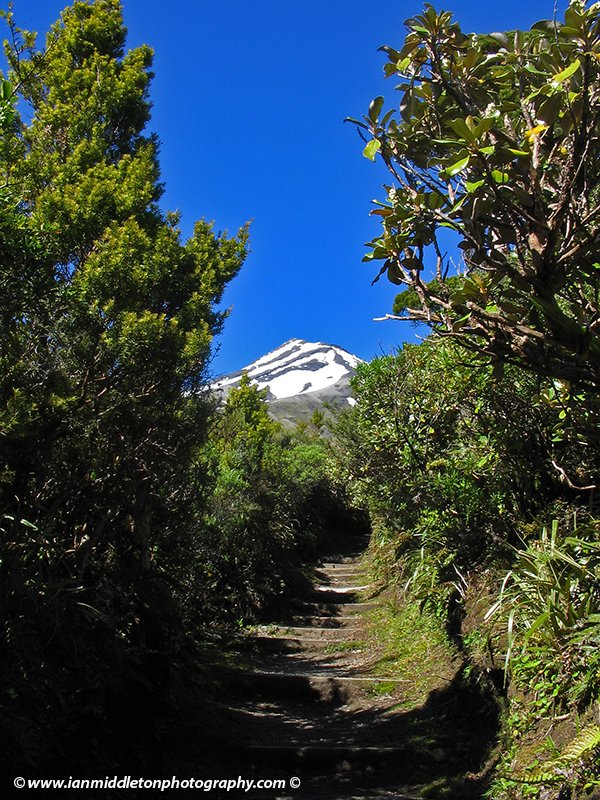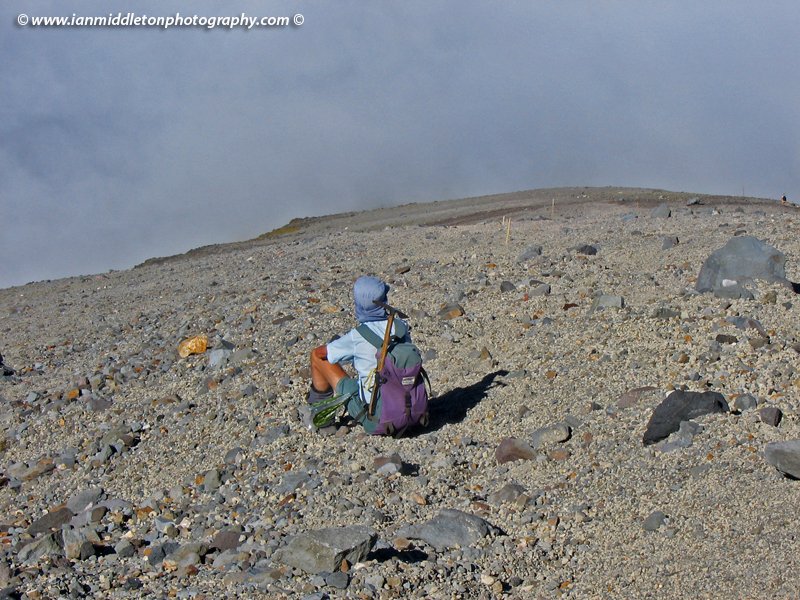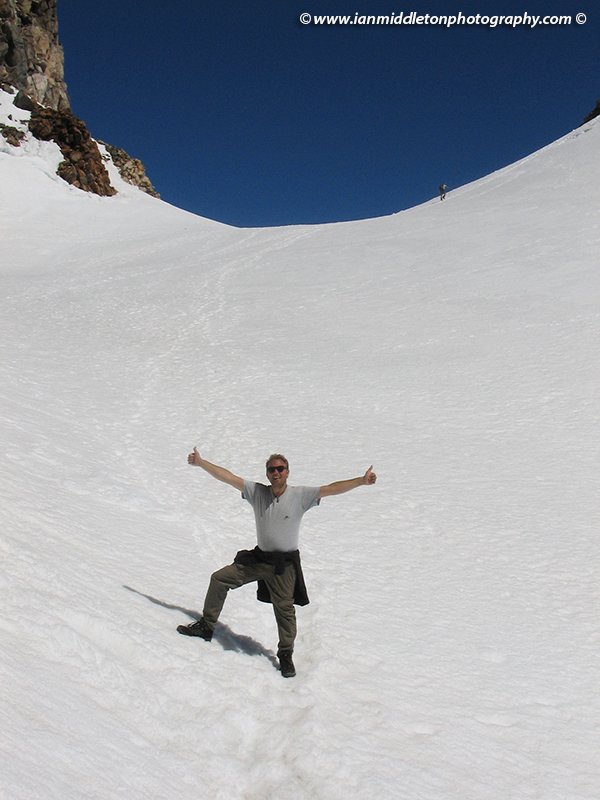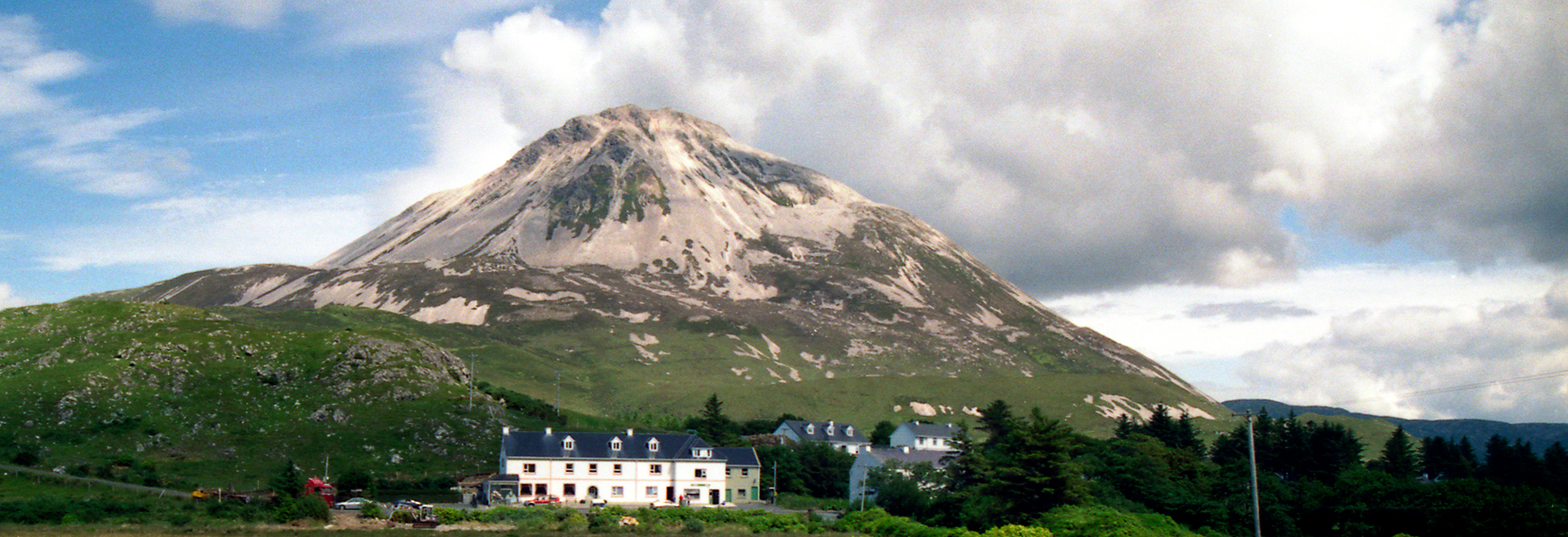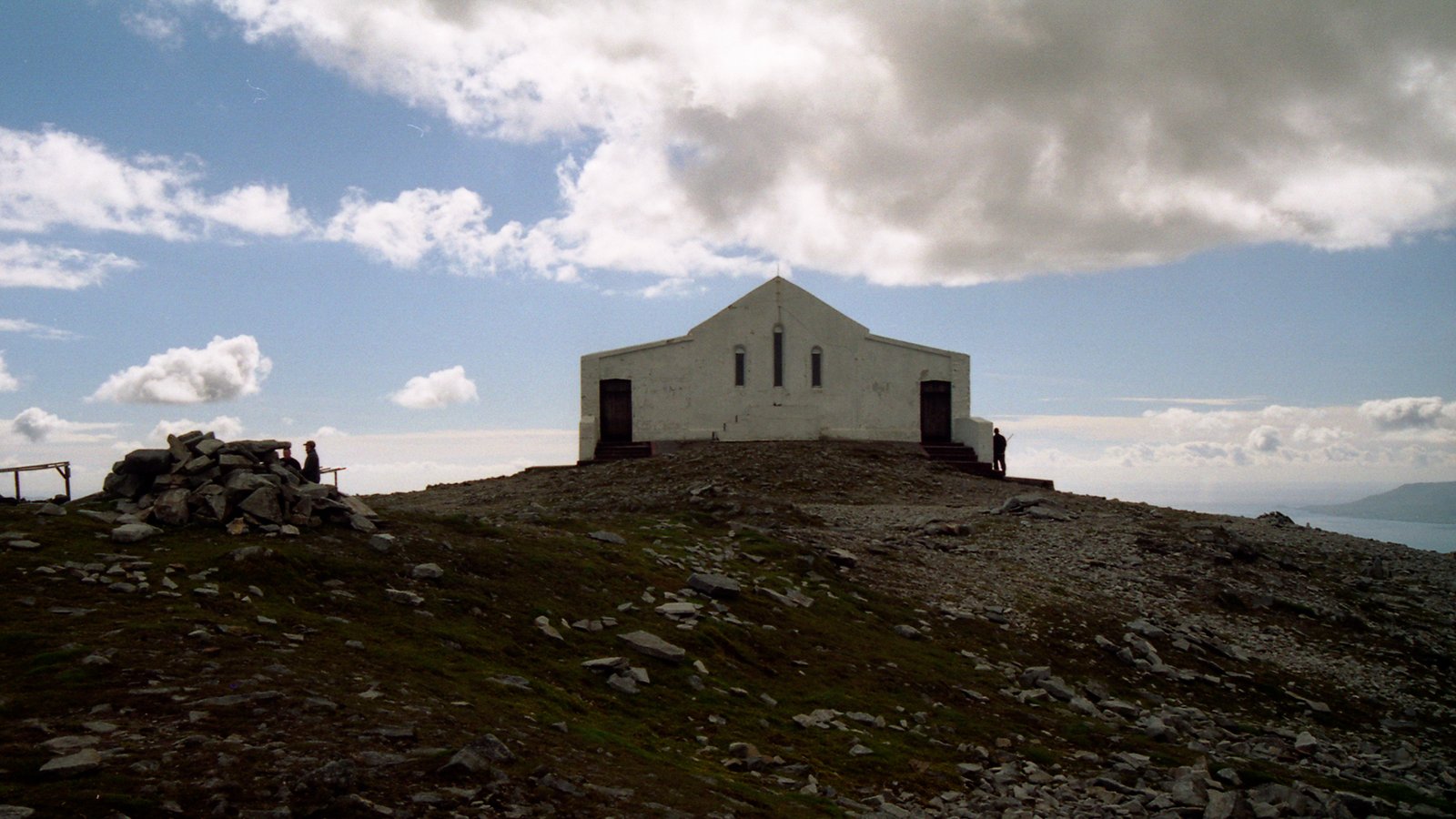Our Taranaki Hike takes An unexpected turn
“This is the old summit trail,” said the strange-looking man wearing dark sunglasses and a French Foreign Legion-style hat. A large bushy grey beard attempted to hide his expressionless face, and his thin, frail body didn’t look like it could withstand a climb to the summit. “I’m taking that route,” he said, “so you can follow me.” We had only just begun our hike up the slopes of Mount Taranaki, a dormant volcano on the west coast of New Zealand’s North Island.
We had missed a turning and were heading along the wrong trail. Our intention had been to go back, but fortune seemed to be smiling upon us.
“My wife and I used to hike Taranaki all the time. She died recently, and now I climb it alone,” he said.
“I’m sorry to hear that,” I replied.
I eyed the large ice axe sticking out of his backpack and began to wonder if it was a wise choice to be led up an old disused trail to the 2500 metre summit of a volcano by a man who was obviously depressed and possibly suicidal.
A Lonely Eminent Figure
Standing alone on the western fringes of New Zealand’s North Island sits the sad and lonely, but eminent figure of Mount Taranaki. According to Maori legend, in ancient times the giant volcanoes of the central North Island’s Taupo Volcanic Zone were gods and Taranaki lived alongside the great Tongariro, Ngauruhoe and Ruapehu. One day however, Taranaki fell in love with Pihanga, the wife of Tongariro. The two embarked upon a whirlwind affair, while Tongariro was away. Upon his return they went to war. Fire and lava belched from the great mountain peaks for days, until finally Taranaki was defeated. Slowly and solemnly, the great volcano headed west, his path carving out the Wanganui River, and his tears filling its channel. Finally he came to rest on a small peninsula on the western coast. Here he hides in a mist of tears, lamenting the loss of his beautiful Pihanga.
However, the evening we had driven into New Plymouth, a large town on the nearby coast, the mountain had been clear and a single wisp of cloud drifted from the crater and headed east. It’s a perfect cone, rising majestically above its surroundings and is a dominating presence on a clear day. Its shape is comparable to Japan’s Mt Fuji, which is why it was the chosen location for the filming of the Last Samurai.
Taranaki is now dormant
Taranaki last erupted in 1755 and has been dormant ever since. On its southern slope is a bulge known as Fanthams Peak, said by some to be the child of the two lovers huddled upon his back. But the slightly more worrying fact is that Mount St Helens, in Washington State, USA, had the same bulge appear on its back before its deadly eruption.
When Captain Cook first came here he named the mountain Mt Egmont, after the man who funded his explorations. In 1900 the Egmont National Park was created, and a visitor centre was built at the start of the modern day summit trail. A huge network of hiking trails fan out from here, including the AMC (around the mountain circuit) and the summit trail. At the centre we gathered all the information we would need for our intended hike to the top. Around 53 people have died here, including some experienced hikers. Many tourists come here on a warm, sunny day and set off up the trail in shorts, tee shirt and inappropriate footwear, only to suddenly find that Taranaki changes his mood and clouds sweep in and engulf the unwitting hiker. The day can start off clear, but by midday it can be completely enshrouded in mist with zero visibility.
Taranaki is in a good mood today
We had set off on our hike up Taranaki the following morning in glorious sunshine. The glistening peak was visible from the start of the trail, and beckoned us on. Although we heeded the warning given the day before, and had stuffed our backpacks with warmer clothes and raincoats.
John was a local man, and proudly told us how he and his late wife had been members of the local tramping club. He hiked the mountain regularly and aimed to climb it every day for the rest of the summer.
“There was a plane crash here recently,” he said. “I’m hoping to find some wreckage.”
We followed behind, partly out of my irrational fear of getting an axe in my back, but mostly because that frail body of his was actually a lot fitter than both ours combined. We soon found ourselves scrambling up over steep rocky terrain and through a part of the mountain that only the locals knew about. The snow-capped summit was still glistening in the distance and the views were outstanding. We clambered up over a mixture of black lava, loose scoria and grassy outcrops. As we neared the summit we hiked alongside long fields of snow. The expression “don’t look down” was even more apt here, because when we did we saw thick clouds gathering in the valley below us. Fear began to grip us at the thought of becoming lost on this hill in zero visibility.
“Don’t worry,” said John. “I know Taranaki like the back of my hand. Stick with me and I’ll get you back down.
Getting there
We were thoroughly exhausted by this time and began to seriously question whether we should turn back or not. But the summit was in sight and beckoned us to conquer it. The landscape spread out before us like an architect’s model, and the scattered cloud was below us, making you feel like you were on top of the world. Above us was a startlingly blue sky and we breathed the freshest air ever. We stopped for some lunch and afterwards decided to continue on. After all, we couldn’t stop now with the end so near.
The closer we got to the summit the more rugged the terrain, until we were climbing more than walking. The snow around us got thicker, but thankfully the trail was clear.
The Summit
Finally, after around 7 hours of hiking we finally emerged inside the Taranaki crater, which was completely filled with snow. From here it was a short hike up over the snow to the actual summit, but we decided this was good enough. The view from here was as good, and our legs simply protested against any more torture. So we rested while John trotted effortlessly on over the field of snow.
A thin layer of scattered clouds spread out below us towards the horizon and the view was breathtaking. Taranaki feeds an incredible ecosystem. The native coastal forests are among the last remaining in the North Island, supporting a wealth of flora and fauna, including the endangered native bird, the Kokako. As we sat in the snow, people were sunbathing on the surrounding beaches. There is enough diversity here to keep you busy for days, even weeks. Above us was deep blue sky. The pure, unpolluted air breathed life back into our exhausted lungs. Snow from the crater cascaded down the mountain slope. I understood now why John had brought that axe; one slip would send anyone on a long icy slide; fun maybe, until the snow gives way to jagged rocks.
Back down again
Upon John’s return, we hiked back down along the new summit trail before veering off on a short cut. The official summit trail was actually more difficult due to the amount of scoria, which is easy to go down, but is often much harder to climb up. With a little help from gravity, hiking down a mountain is often a bit quicker, and we made it back to the visitor centre in 3 hours. Visibility had remained good even on the way down. The hike up Taranaki should have taken around five hours, had we not gone the wrong way and been so unfit.
Taranaki had spared us his tears and allowed us safe passage to his heart. John, like the mountain, was also lamenting the loss of his beloved woman, but had proved an excellent guide and a very patient man indeed. Fortune really had smiled on us today. We thanked him for sticking with us all the way and showing us a route up this incredible volcano that many visitors would never know about.
With that in mind we crawled to the car like two chimpanzees on valium and drove back to the comfort of our hostel, and the welcome warmth of a soft bed.
Info:
Places to stay:
Egmont Eco-Lodge
12 Clawton Street, New Plymouth
Tel (06) 753 5720
Getting there:
For flights to New Zealand have a look at Flight Centre here:
Getting around:
InterCity Group (NZ) Ltd.
PO BOX 26 601,
Epsom, Auckland
Backpacker buses:
Driving: If you plan on being there for a while then you can buy a car at the backpackers car market in Auckland.
